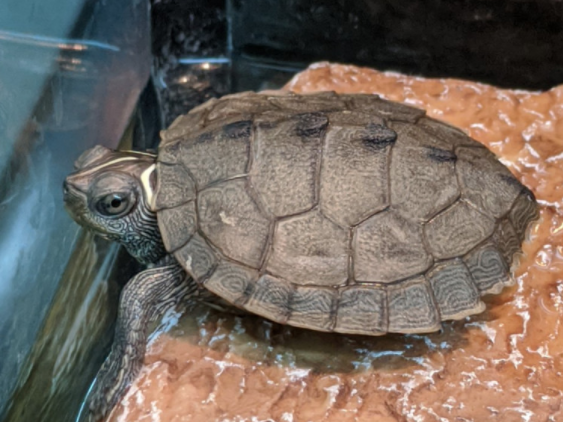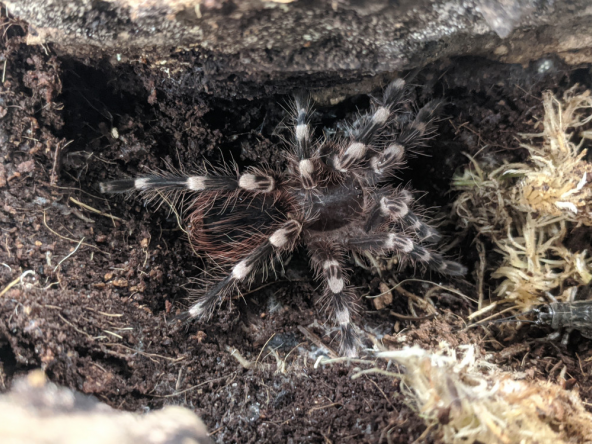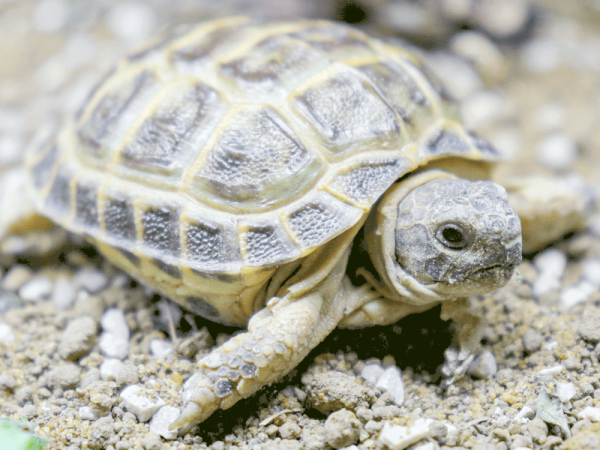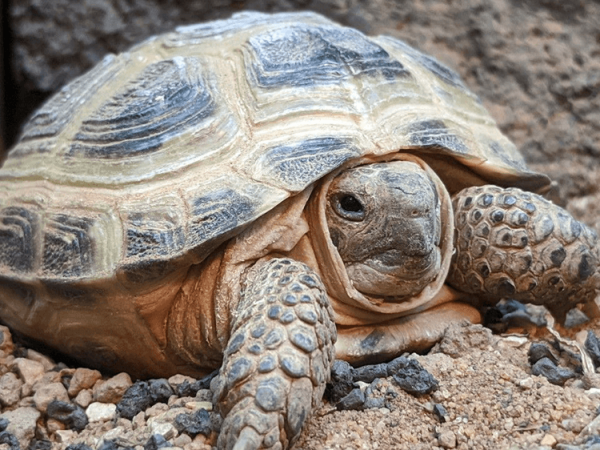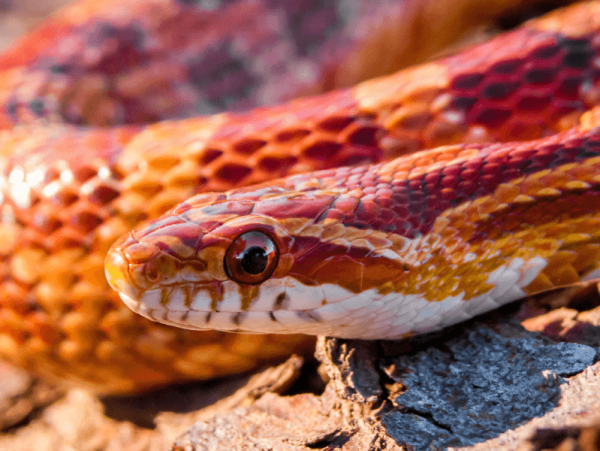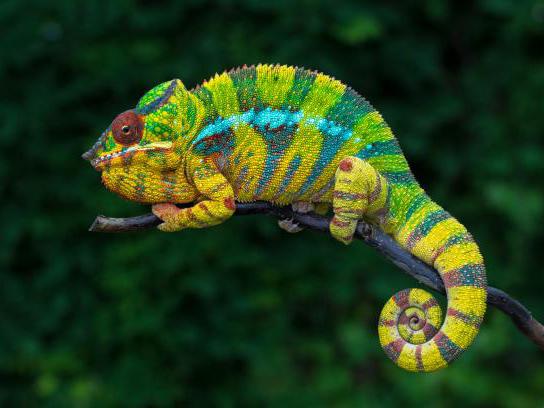Optional extras
Mississippi map turtle, Graptemys pseudogeographica kohni, care sheet
Categories: Care sheetsChelonians
The Mississippi Map Turtle can be found along the length of the Mississippi River as well as other streams and lakes of North America. They are both aquatic and terrestrial in their habits, are strong swimmers but also venture to the surface for basking opportunity.
They have a green-brown shell colour with dark skin that is lined with yellow markings. Turtles aren’t the best pets for handling and can be intolerant so don’t handle them. You wouldn't want them away from the water too long either as this is where they are able to move best and feel safe.
Housing
The Mississippi Map Turtle is a smaller species of turtle measuring around 5 inches for the males and up to 10 inches for the females. Tank size depends therefore on the gender and size of your turtle, with smaller males suitable for being housed in a 3ft tank, and larger females a 4ft+. Fish tanks are best to provide the depth of water but ensure the correct reptile lighting can be fitted, so an open-topped tank without a hood may be better.
This species is terrestrial as well as aquatic, so a land area will be necessary to incorporate a basking area. This can be done with rockwork or platforms such as Zoo Med’s Turtle Dock but needs to be large enough so that the basking bulb is over the land area only and not the water (this can cause them to blow). Use a variety of rocks, wood pieces and foliage to provide good leverage for movement as well as creating a more natural setting and enriching environment. Provide hiding opportunity so that your turtles feel secure.
Water temperature
The temperature of the water should remain between 22 - 25C for adult turtles, though it is recommended to keep youngsters slightly warmer, and this can be achieved with the right sized aquarium heater. For monitoring purposes and to ensure the heater is working effectively, you will also need an accurate aquatic thermometer.
Water conditions for the Mississippi Map Turtle should be kept clean with no ammonia, nitrite and very little nitrates - similar to that of a fish tank - and that is achieved through a good quality filtration system. Turtles, in general, can be mucky pets and require regular water changes as well as a good filter, but you will find the better the filter the less work for you. An external filter will be best. Like with a fish tank you will need to clean gravel of any waste and debris and ensure filter sponges are kept clean.
Basking temperature
The basking temperature for this species should be 30-32C above the land area of the tank. As they also require UV this could be achieved with a mercury vapour bulb (heat and UV in one bulb) - though it is important that this is attached to a movable bracket as they cannot be attached to a thermostat.
Heat and UV can be separate though this would require the construction of brackets for the strip UV over the top of the tank and a heat bulb. The UV should be high output like Arcadia's mercury vapour or 12% T5 bulbs, dependent on the height of the enclosure. This UVB will create a more natural environment and ensure proper health and well being of your turtle so is a necessity, without which illness will occur. UV should be used in a 12-hour cycle, going off at night to promote good day and night periods. UV only has a lifespan of 6-12 months, depending on the bulb and brand. After this, the UV will no longer be effective, even if the bulb is glowing.
Mississippi Map Turtles are an omnivorous species and will feed on a variety of fish, worms, muscle, commercial pellet feed and insects as well as vegetation, which will become a more prominent part of the diet into adulthood.
Health issues have been noted with this species when given a diet too high in protein, so ensure they eat their greens! The fish in the diet will provide a good calcium source as bones are ingested, and the veg will provide good vitamins, however it is still essential to supplement the diet.
Being aquatic this can be a little tricky as many supplements come in the form of dust, but there are alternatives such as Beaphar Turtle Vit or Zoo Meds Dr. Turtle Slow Release Calcium Block which should be utilised, ensuring your turtle has all the required nutrition for health and development.
Species profile
- Scientific name: Graptemys pseudogeographica kohni
- Adult Expected Size - Male: 5 inches / Female: up to 10 inches
- Habitat - rivers and streams in North America. Semi-aquatic.
- Required Enclosure Size - 3ft fish tank for males / 4ft minimum for females
- UV Lighting - 3 - 4 UVI (12% T5 - depending on the height from basking)
- Expected Lifespan - 20 - 30 Years
- Temperature Gradient - Water temp: 22 - 25C / Basking temp: 30 - 32C
- Humidity Levels - Aquatic
- Feeding - Omnivore - a variety of fish, worms, muscle, commercial pellet feed and insects as well as vegetation
- Handling - Turtles aren’t the best pets for handling and tend to be intolerant, feeling safer in water.
Jeremy Gay is an author, lifelong fishkeeper, and exotic pet specialist. He's a former editor of Practical Fishkeeping Magazine, UK editor at Reefbuilders, a former pet store manager, and has collected wildlife in Sri Lanka and the Amazon. He's been on tv and radio, contributed to Koi Carp and Gardeners World magazines, been a product tester, a judge, and a product developer.




